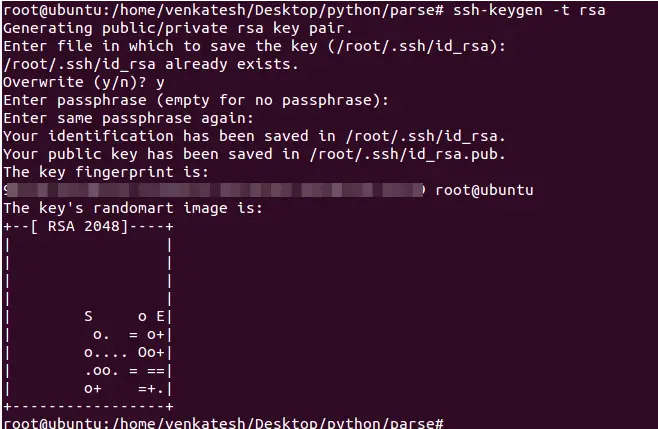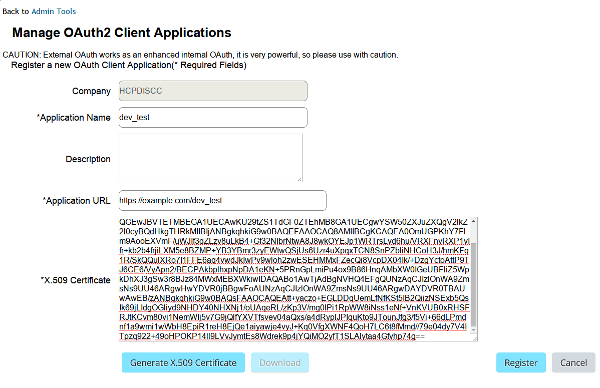Python Quick Generate Rsa Key Pair
- Cryptography with Python Tutorial
Generating key pairs with OpenSSH¶ Another tool that you can use to generate key pairs is ssh-keygen, which is a tool included in the SSH suite that is specifically used to create and manage SSH keys. As SSH keys are standard asymmetrical keys we can use the tool to create keys for other purposes. To create a key pair. 300 bytes (2400 bits!) is incredibly overkill in all situations, no matter how big the private key is. All you would ever need is 256 bits, and even that is more than enough for the average private key (which is about as secure as a 112 bit symmetric key, at least for RSA 2048).
- Useful Resources
- Selected Reading
RSA (Rivest-Shamir-Adleman) is a public-key encryption algorithm with a typical key size of 1,024 to 4,096 bits. 2 large primes are required to generate the keys. AES (Advanced Encryption Standard) is based on Rijndael, secret- key encryption algorithm using a block cipher with key sizes of 128, 192, or 256 bits.

In this chapter, we will focus on step wise implementation of RSA algorithm using Python.
Reasons for importing keys include wanting to make a backup of a private key (generated keys are non-exportable, for security reasons), or if the private key is provided by an external source. This document will guide you through using the OpenSSL command line tool to generate a key pair which you can then import into a YubiKey. Generate an RSA keypair. Contribute to LinusU/node-generate-rsa-keypair development by creating an account on GitHub. (CkPython) Generate RSA Public/Private Key Pair and Export to PEM. CkPython example code showing how to generate an RSA public/private key pair and export to PEM files. Chilkat Python Downloads. Python Module for Windows, Linux, Alpine Linux, MAC OS X, Solaris, FreeBSD, OpenBSD.
Generating RSA keys
The following steps are involved in generating RSA keys −
Create two large prime numbers namely p and q. The product of these numbers will be called n, where n= p*q
Generate a random number which is relatively prime with (p-1) and (q-1). Let the number be called as e.
Calculate the modular inverse of e. The calculated inverse will be called as d.
Algorithms for generating RSA keys
We need two primary algorithms for generating RSA keys using Python − Cryptomath module and Rabin Miller module.
Cryptomath Module
The source code of cryptomath module which follows all the basic implementation of RSA algorithm is as follows −
RabinMiller Module
The source code of RabinMiller module which follows all the basic implementation of RSA algorithm is as follows −
The complete code for generating RSA keys is as follows −
Output
The public key and private keys are generated and saved in the respective files as shown in the following output.
While Encrypting a File with a Password from the Command Line using OpenSSLis very useful in its own right, the real power of the OpenSSL library is itsability to support the use of public key cryptograph for encrypting orvalidating data in an unattended manner (where the password is not required toencrypt) is done with public keys.
The Commands to Run
Generate a 2048 bit RSA Key
You can generate a public and private RSA key pair like this:
openssl genrsa -des3 -out private.pem 2048
That generates a 2048-bit RSA key pair, encrypts them with a password you provideand writes them to a file. You need to next extract the public key file. You willuse this, for instance, on your web server to encrypt content so that it canonly be read with the private key.
Export the RSA Public Key to a File
This is a command that is
openssl rsa -in private.pem -outform PEM -pubout -out public.pem
The -pubout flag is really important. Be sure to include it.
Next open the public.pem and ensure that it starts with-----BEGIN PUBLIC KEY-----. This is how you know that this file is thepublic key of the pair and not a private key.
To check the file from the command line you can use the less command, like this:
less public.pem
Do Not Run This, it Exports the Private Key
A previous version of the post gave this example in error.
Office 2013 professional plus serial key generator. openssl rsa -in private.pem -out private_unencrypted.pem -outform PEM

The error is that the -pubout was dropped from the end of the command.That changes the meaning of the command from that of exporting the public keyto exporting the private key outside of its encrypted wrapper. Inspecting theoutput file, in this case private_unencrypted.pem clearly shows that the keyis a RSA private key as it starts with -----BEGIN RSA PRIVATE KEY-----.
Visually Inspect Your Key Files
It is important to visually inspect you private and public key files to makesure that they are what you expect. OpenSSL will clearly explain the nature ofthe key block with a -----BEGIN RSA PRIVATE KEY----- or -----BEGIN PUBLIC KEY-----.
You can use less to inspect each of your two files in turn:
less private.pemto verify that it starts with a-----BEGIN RSA PRIVATE KEY-----less public.pemto verify that it starts with a-----BEGIN PUBLIC KEY-----
The next section shows a full example of what each key file should look like.
The Generated Key Files
The generated files are base64-encoded encryption keys in plain text format.If you select a password for your private key, its file will be encrypted withyour password. Be sure to remember this password or the key pair becomes useless.
The private.pem file looks something like this:
The public key, public.pem, file looks like:
Protecting Your Keys
Depending on the nature of the information you will protect, it’s important tokeep the private key backed up and secret. The public key can be distributedanywhere or embedded in your web application scripts, such as in your PHP,Ruby, or other scripts. Again, backup your keys!
Remember, if the key goes away the data encrypted to it is gone. Keeping aprinted copy of the key material in a sealed envelope in a bank safety depositbox is a good way to protect important keys against loss due to fire or harddrive failure.
Oh, and one last thing.
If you, dear reader, were planning any funny business with the private key that I have just published here. Know that they were made especially for this series of blog posts. I do not use them for anything else.
Found an issue?
Rsa Key Pair
Rietta plans, develops, and maintains applications.
Generate Rsa Key
Learn more about our services or drop us your email and we'll e-mail you back.